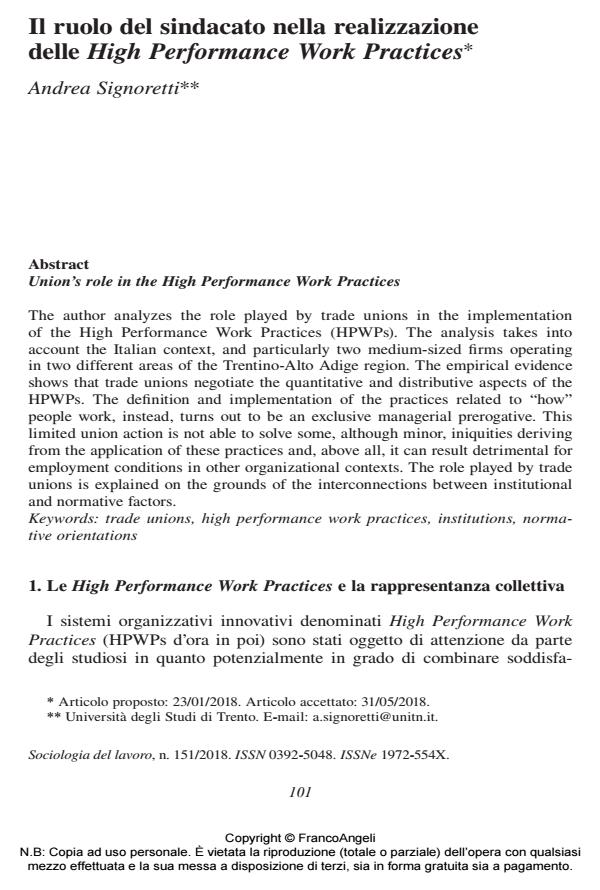Union’s role in the High Performance Work Practices
Journal title SOCIOLOGIA DEL LAVORO
Author/s Andrea Signoretti
Publishing Year 2018 Issue 2018/151
Language Italian Pages 16 P. 101-116 File size 126 KB
DOI 10.3280/SL2018-151006
DOI is like a bar code for intellectual property: to have more infomation
click here
Below, you can see the article first page
If you want to buy this article in PDF format, you can do it, following the instructions to buy download credits

FrancoAngeli is member of Publishers International Linking Association, Inc (PILA), a not-for-profit association which run the CrossRef service enabling links to and from online scholarly content.
The author analyzes the role played by trade unions in the implementation of the High Performance Work Practices (HPWPs). The analysis takes into account the Italian context, and particularly two medium-sized firms operating in two different areas of the Trentino-Alto Adige region. The empirical evidence shows that trade unions negotiate the quantitative and distributive aspects of the HPWPs. The definition and implementation of the practices related to "how" people work, instead, turns out to be an exclusive managerial prerogative. This limited union action is not able to solve some, although minor, iniquities deriving from the application of these practices and, above all, it can result detrimental for employment conditions in other organizational contexts. The role played by trade unions is explained on the grounds of the interconnections between institutional and normative factors.
Keywords: Trade unions, high performance work practices, institutions, normative orientations
Andrea Signoretti, Il ruolo del sindacato nella realizzazione delle High Performance Work Practices in "SOCIOLOGIA DEL LAVORO " 151/2018, pp 101-116, DOI: 10.3280/SL2018-151006